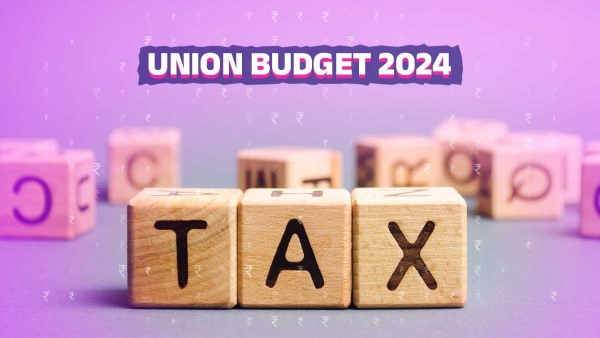The Union Budget 2024 has proposed simplifying the holding periods for capital gains by introducing only two durations: 12 months and 24 months, to determine short-term and long-term capital gains, respectively. Additionally, the tax rates have been streamlined and made uniform for most assets.
The indexation benefit has been removed in Budget 2024, while the exemption limit for Long-term Capital Gains (LTCG) on assets such as listed shares and mutual funds has been increased from Rs 1 lakh to Rs 1.25 lakh.
The tax rate for Short-term Capital Gains (STCG) has been raised to 20 percent, and the LTCG tax rate is now 12.5 percent for specific assets. Furthermore, the Securities Transaction Tax (STT) has been increased from 0.1 percent to 0.2 percent for equity transactions.
For investors seeking more information on the new capital gains tax proposals, the Central Board of Direct Taxes (CBDT) has issued a list of FAQs.
CBDT is a part of the Department of Revenue under the Ministry of Finance, Government of India.
Q1. What are the major changes brought about in the taxation of capital gains by the Finance (No.2) Bill, 2024?
Ans. The taxation of capital gains has been rationalised and simplified. There are 5 broad parameters to this rationalisation and simplification, namely:-
- Holding period has been simplified. There are only two holding periods now, viz. 1 year and 2 year.
- Rates have been rationalised and made uniform for majority of assets.
- Indexation has been done away with for ease of computation with simultaneous reduction of rate from 20% to 12.5%.
- Parity between Resident and Non-resident.
- No change in roll over benefits.
Q2. What is the date when the new taxation provisions come into force?
Ans. The new provisions for taxation of capital gains come into force from 23.7.2024 and shall apply to any transfer made on or after 23.7.2024.
Q3. How has the holding period been simplified?
Ans. Earlier there were three holding periods for considering an asset to be a long- term capital asset. Now the holding period has been simplified. There are only two holding periods,- for listed securities, it is one year, for all other assets, it is two years.
Q4. Who will benefit from the change in holding period?
Ans. The holding period of all listed assets will now be one year. Therefore, for listed units of business trusts (ReITs, InVITs) holding period is reduced from 36 months to 12 months. The holding period of gold, unlisted securities (other than unlisted shares) is also reduced from 36 months to 24 months.
Q5. What about the holding period of immovable property and unlisted shares?
Ans. The holding period of immovable property and unlisted shares remains the same as earlier i.e. 24 months.
Q6. Elaborate on the change in the rate structure for STT paid capital assets?
Ans. Rate for short-term STT paid listed equity, Equity oriented mutual fund and units of business trust (Section 111A) has increased from 15 to 20%. Similarly the rate for these assets for long-term (S. 112A) has increased from 10 to 12.5%.
Q7. Is there any change in the exemption limit for long-term capital gains under section 112A which was earlier one lakh Rs.?
Ans. Yes. The exemption limit of 1 lakh for LTCG on these assets has also increased to 1.25 lakh Rs. This increased exemption limit will apply for FY 2024-25 and subsequent years.
Q8. Elaborate on change in the rate structure for other long-term capital gains?
Ans. The rate for other long-term capital gains on all assets has been rationalised to 12.5% without indexation (Section 112). This rate was earlier 20% with indexation. This will ease in simplifying the taxation of capital gains and their easy computation.
Q9. Who will benefit by a change in rate from 20% (with indexation) to 12.5% (without indexation)?
Ans. The reduction in the rate will benefit all categories of assets. In most cases, the taxpayers will benefit substantially. But where the gain is limited vis-a-vis inflation, the benefit will also be limited or absent in a few cases.
Q10. Can the taxpayer continue to avail the roll over benefits on capital gains?
Ans. Yes. The roll over benefits remain the same as earlier. There is no change in roll over benefits already available under the IT Act. Therefore, taxpayers who want to save on LTCG tax even with low rates, can continue to avail the roll over benefits on fulfilment of conditions as applicable.
Q11. In which assets, can the long-term capital gains be invested for roll over benefits?
Ans. For roll over benefits, taxpayers can invest their gains in houses under section 54 or section 54F or in certain bonds under section 54EC. For complete details of all roll over benefits, please refer to section 54, 54B, 54D, 54EC 54F, 54G of the IT Act.
Q12. What is the amount upto which roll over benefit is available?
Ans. Investment of capital gain in 54EC bonds (up to Rs. 50 lakh) and in other cases, the capital gain is exempt from tax, subject to certain specified conditions.
Q13. What is the overall rationale for changes?
Ans. Simplification of any tax structure has benefits of ease of compliance viz computation, filing, maintenance of records. This also removes the differential rates for various classes of assets.
Source by: news18










